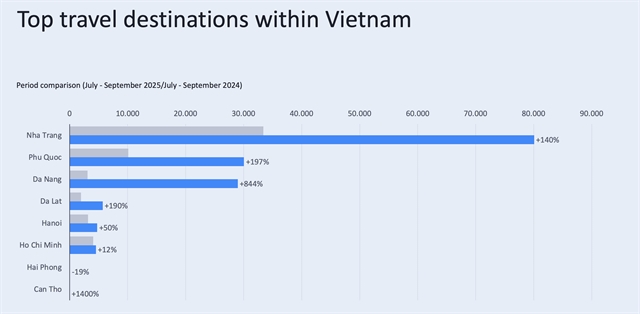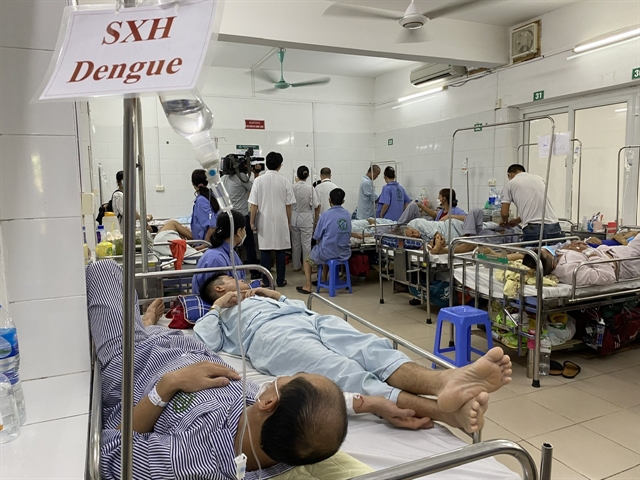 Society
Society


|
| The number of dengue fever cases has increased in Hà Nội and HCM City in recent days. — Photo vov.vn |
HCM CITY — Health experts discussed measures to enhance dengue prevention strategies in Việt Nam at a conference in HCM City on September 28.
At the event, participants heard that the peak season of dengue hemorrhagic fever (DHF) in Việt Nam often lasts from June to October. At present, the country is facing the ongoing complexity of outbreaks each year post-pandemic, with rising pressure on Việt Nam's healthcare system. As of now, Việt Nam has recorded 81,808 cases of dengue fever this year, with 23 fatalities.
At the conference, international and local health experts discussed Việt Nam's dengue fever preventive initiatives and methods to improve their effectiveness. They also explored new interventions that could enhance the management of dengue transmission within the country.
According to Associate Professor Nguyễn Thanh Hùng, Director of Children’s Hospital 1, DHF still poses a major threat in Việt Nam and globally due to its potential to cause a large outbreak and severe health outcomes.
“The disease is characterised by high fever that lasts several days and can result in serious complications such as hypovolemic shock from plasma loss, gastrointestinal bleeding, cerebral haemorrhage, and multi-organ failure. These complications can rapidly progress and may be fatal if not promptly and intensively treated. Beyond the health risks, dengue also imposes an economic strain on individuals and communities. Moreover, the disease can have long-term psychological effects on patients and communities and significantly impact social security. From a healthcare perspective, the increasing number of dengue patients over the years has put immense pressure on hospitals, leading to a shortage of resources for adequate patient care,” said Hùng.
Assoc., Prof. Hùng added: “To maintain treatment capacity, medical facilities in HCM City and across the country have effectively implemented the Ministry of Health’s guidelines for diagnosing and treating dengue fever. This includes proper organisation of treatment at all healthcare levels, early detection, correct treatment of dengue patients, strengthening facilities and equipment, and ensuring adequate supplies of infusion fluids. These measures have saved many lives and significantly reduced the mortality rate from dengue fever in our country.”
“However, it is crucial to have close collaboration between treatment and prevention systems. Public awareness campaigns about dengue are essential to effective prevention measures such as mosquito control and vaccination when an effective vaccine becomes available," Hùng added.
“Dengue fever is very different from other infectious diseases as it puts the entire population at risk, regardless of age. Alongside the current measures, it’s crucial to incorporate dengue control models that employ advanced scientific methods in countries with similar climatic and epidemic conditions as Việt Nam, such as Indonesia and Thailand. A stronger, more comprehensive, and sustainable epidemic control model can only be built when the medical community and society work together,” said Dr. Lương Chấn Quang, Acting Head of the Department for Disease Control and Prevention at the Pasteur Institute in HCM City.
Experts alluded to the need for sustainable and long-term solutions to prevent and control dengue fever in the country. This requires not just clinical and preventative methods but also efforts and collaborations from both public and private sectors in combatting dengue, a global public health threat.
The conference was jointly organised by the Pasteur Institute in HCM City in collaboration with Takeda Pharmaceuticals. The event is organised in commemoration of the 50th anniversary of diplomatic relations between Việt Nam and Japan. — VNS